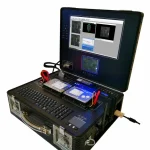In today’s fastpacked digital era, businesses and individuals alike are constantly seeking tools that streamline operations without breaking the bank. One such gamechanger is scrap software versatile solution that not only enhances productivity but also reduces unnecessary costs. Whether you’re managing data, automating processes, or tracking materials, understanding how to leverage this software can transform your workflow.
This guide dives into everything you need to know about scrap software, offering practical insights for beginners and seasoned users alike. By the end, you’ll see why investing in the right software is no longer optional but essential.
Why You Should Consider Buying Scrap Software
Investing in the right software can feel overwhelming, but the advantages of buying scrap software are hard to ignore. Here’s why businesses across industries are adopting this tool:
- Efficiency Boost: Scrap software automates repetitive tasks, ensuring that your operations run smoothly without constant manual intervention.
Beyond automation, scrap software is particularly valuable for businesses handling large amounts of data. It simplifies inventory management, reduces human errors, and ensures that every piece of information is accurately recorded. Moreover, it can integrate with existing systems, providing a seamless experience without disrupting your current workflow.
Another significant benefit is cost reduction. By optimizing processes, scrap software minimizes wasted resources, helping you save money in the long run. In industries like manufacturing, logistics, and recycling, these savings can be substantial.
How to Choose the Right Scrap Software
Finding the perfect scrap software isn’t just about picking up the most popular option; it’s about understanding your needs and matching them with the software features. When looking to buy scrap software, consider these key factors:
- User Friendly Interface: A simple and intuitive interface ensures that your team can adapt quickly without extensive training.
- Compatibility with your current systems is crucial. Ensure the software can seamlessly integrate with your existing databases, tools, and platforms.
- Scalability matters. Your business will grow, and your software should grow with you. Investing in a solution that accommodates future needs will save time and money down the road.
- Customer support and updates are often overlooked but vital. Choose a provider that offers reliable support and regular software updates to address potential issues and keep your system running smoothly.

Practical Tips for Getting Started
Once you decide to buy scrap software, successful implementation is the next step. Here are some practical tips to make the most of your investment:
- Start with a pilot program: Test the software with a small team to identify potential issues before full scale deployment.
- Train your team: Proper training ensures that everyone understands how to use the software efficiently.
- Monitor and adjust: Continuously evaluate the software’s performance and make necessary adjustments to maximize its benefits.
Remember, scrap software isn’t just a toolkit’s an investment in efficiency, accuracy, and long-term savings. By following these tips, you can ensure a smooth transition and immediate improvements in your workflow.
Conclusion:
Incorporating scrap software into your operations can revolutionize the way you manage tasks, track data, and save costs. From boosting efficiency to reducing errors and optimizing resources, the benefits are undeniable.






